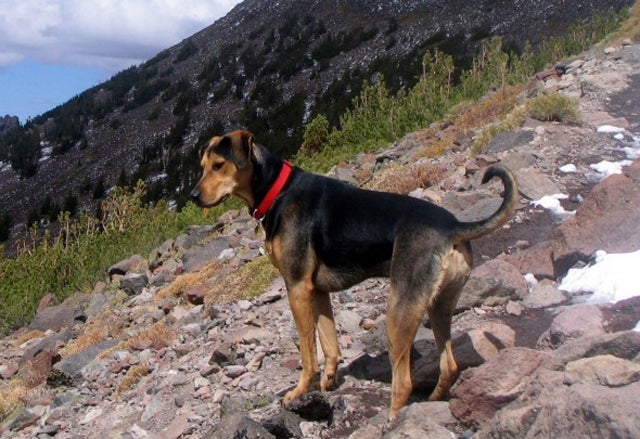A cat hound, hey? This is going to be a tough one. What we have here is a dog bred to instinctively do exactly what she is doing, pursue game. To her, the cat is legitimate prey. Cats do indeed offer a bit of sport to the hound breeds. Basically you’re working against this dog’s instinct. But that said, we, too, in the retriever business, do the same. Our dogs pursue game, pick it, flush it from cover, track it, etc. But they have to learn to be steady and only perform these skills when directed. Here’s your task:
1. An enormous amount of obedience control is needed: heel, sit, stay, and recall must be impeccable.
2. When these skills are thoroughly entrenched and your dog’s behavior is calm and focused, we can start introducing distractions. Naturally do not start with the ultimate, a cat (fake or otherwise). Simply walk your dog down the drive bouncing a tennis ball or rolling it in front of you. Have your dog at sit, throw her favorite toy past her, and then require her to stay seated while you pick it up yourself. (This is called a denial.) Only when your dog has mastered one level of distraction can you move on to the next level.
3. De-sensitize your dog to more active distractions: kids running around the park, squirrels playing about, ground birds such as robins that would flush in front of your dog as she walks on lead. Get your dog walking around other dogs that are running, playing, and retrieving. Practice recalls, stay, etc. with all of these distractions moving about. Add a check cord for security so you can add distance between you—another big disctraction—and your dog.
4. Finally, after several months of incremental training with lesser distractions, it’s time to introduce a cat. See if you can find one that you can place in a cage and work your dog around—seeing it from a distance, then gradually heeling or loose-leash-walking toward the cage, and finally walking right past it. In all trials, your dog’s attention must be on you and not the cat. If she wavers, go back to a lower level of distraction and build up slowly. When heeling, a quick snap of the lead or treats can help put her attention back on you. If your dog likes to retrieve, you might have a bit of a game on the check cord rewarding the good behavior with a fun retrieve and keeping her focus off the cat. With our bird-crazy retrievers, we do a similar exercise using caged quail and pigeons. In order to get a reward, the dog’s attention must remain on the handler and not wander to the bird.
5. Once she’s solid with the cat in a cage, it’s time to have a friend release the cat while your dog sits patiently on lead. If your hound attempts to chase, give a firm correction with a “no” and heel in the opposite direction.
There are a lot of exercises you’ll need involving a cat. Desensitization takes a great deal of time, positive reinforcement (treats), a check cord, and a slip collar or choker chain for firm corrections and, finally and most importantly, a willing friend with a cat. You can’t just expect your dog to start ignoring cats. It’s a slow and gradual progression. With consistency, patience, and a lot of time, I’m confident you and Mabel can do it.
This article originally appeared on �����ԹϺ��� K9, the former dog blog of �����ԹϺ��� magazine, on May 14, 2009.


